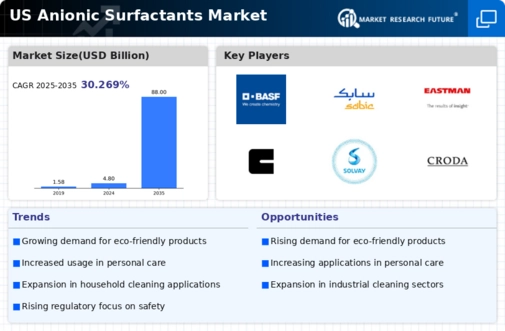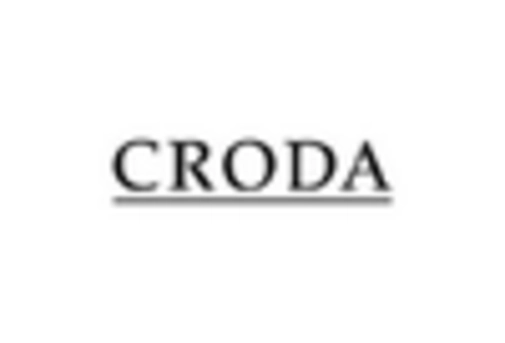The anionic surfactants market is characterized by a competitive landscape that is both dynamic and multifaceted. Key growth drivers include the increasing demand for eco-friendly products, advancements in formulation technologies, and the rising consumer preference for sustainable cleaning solutions. Major players such as BASF SE (DE), Dow Inc. (US), and Stepan Company (US) are strategically positioned to leverage these trends. BASF SE (DE) focuses on innovation and sustainability, investing heavily in R&D to develop biodegradable surfactants. Dow Inc. (US) emphasizes digital transformation and supply chain optimization, enhancing operational efficiency. Stepan Company (US) is expanding its product portfolio through strategic partnerships, thereby strengthening its market presence. Collectively, these strategies shape a competitive environment that is increasingly oriented towards sustainability and technological advancement.
Key business tactics in the anionic surfactants market include localizing manufacturing and optimizing supply chains to enhance responsiveness to market demands. The market structure appears moderately fragmented, with several key players exerting influence over various segments. This fragmentation allows for niche players to thrive, while larger companies consolidate their positions through strategic acquisitions and partnerships. The collective influence of these key players fosters a competitive atmosphere where innovation and sustainability are paramount.
In November 2025, BASF SE (DE) announced the launch of a new line of biodegradable surfactants aimed at the personal care sector. This strategic move underscores the company's commitment to sustainability and positions it favorably in a market increasingly driven by eco-conscious consumer preferences. The introduction of these products is likely to enhance BASF's competitive edge, as it aligns with the growing demand for environmentally friendly formulations.
In October 2025, Dow Inc. (US) unveiled a new digital platform designed to streamline its supply chain operations. This initiative is indicative of the company's focus on digital transformation, which aims to improve efficiency and reduce operational costs. By leveraging advanced analytics and AI, Dow is poised to enhance its responsiveness to market fluctuations, thereby solidifying its competitive position in the anionic surfactants market.
In September 2025, Stepan Company (US) entered into a strategic partnership with a leading biotechnology firm to develop innovative surfactant solutions derived from renewable resources. This collaboration highlights Stepan's proactive approach to sustainability and innovation, potentially allowing the company to capture a larger share of the market as consumers increasingly seek out sustainable alternatives.
As of December 2025, current competitive trends in the anionic surfactants market are heavily influenced by digitalization, sustainability, and the integration of AI technologies. Strategic alliances are becoming more prevalent, as companies recognize the value of collaboration in driving innovation and enhancing product offerings. Looking ahead, competitive differentiation is likely to evolve, with a pronounced shift from price-based competition to a focus on innovation, technology, and supply chain reliability. This transition suggests that companies that prioritize sustainable practices and technological advancements will be better positioned to thrive in the evolving market landscape.


















Leave a Comment